Drawing your Viola da Gamba Bow
An iconographical survey of bows for the viola da gamba family
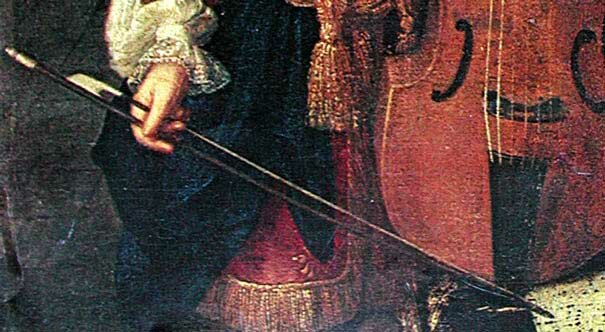
Marin Marais: a long and elegant French bow for a bass viola da gamba, ca. 1690
Renaissance Bows
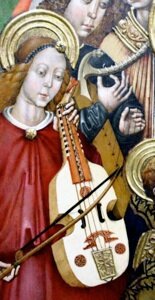
Xàtiva (Spain): earliest painting of a viola da gamba (c.1475)
Notice the black hair! These two bows do not have a separate head; the hair is simply attached to the end of the staff
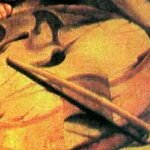
Raffaello (1518): detail of bridge and bow on a Renaissance viol, also with black hair
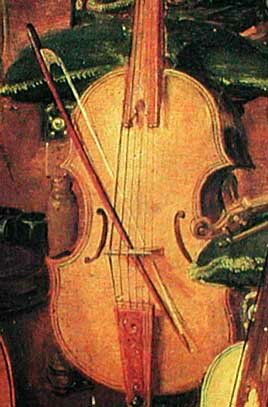 |
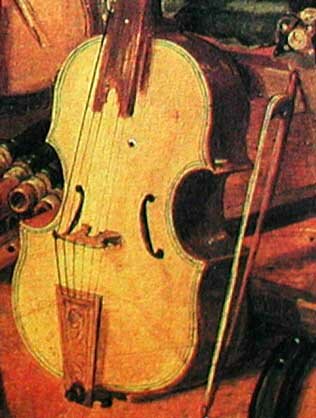 |
Jan Breughel the elder: “Hearing” from “The Senses”.
Note white hair on this early baroque tenor viola da gamba bow.
The end of the bow has a distinct head into which the hair is inserted
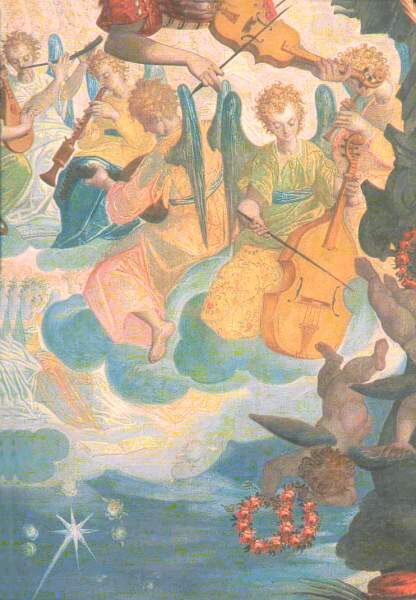
Piazza da Todi (1st quarter, 16th C.)
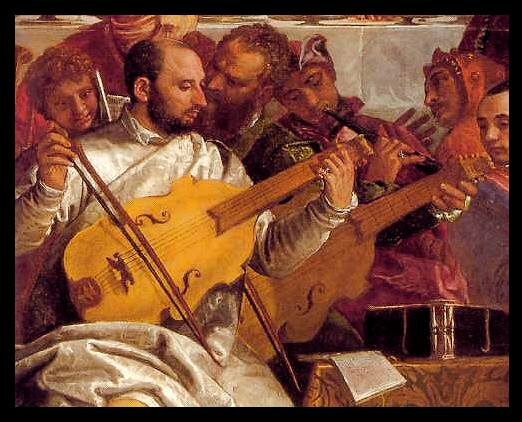
Paolo Veronese (1528-1588)
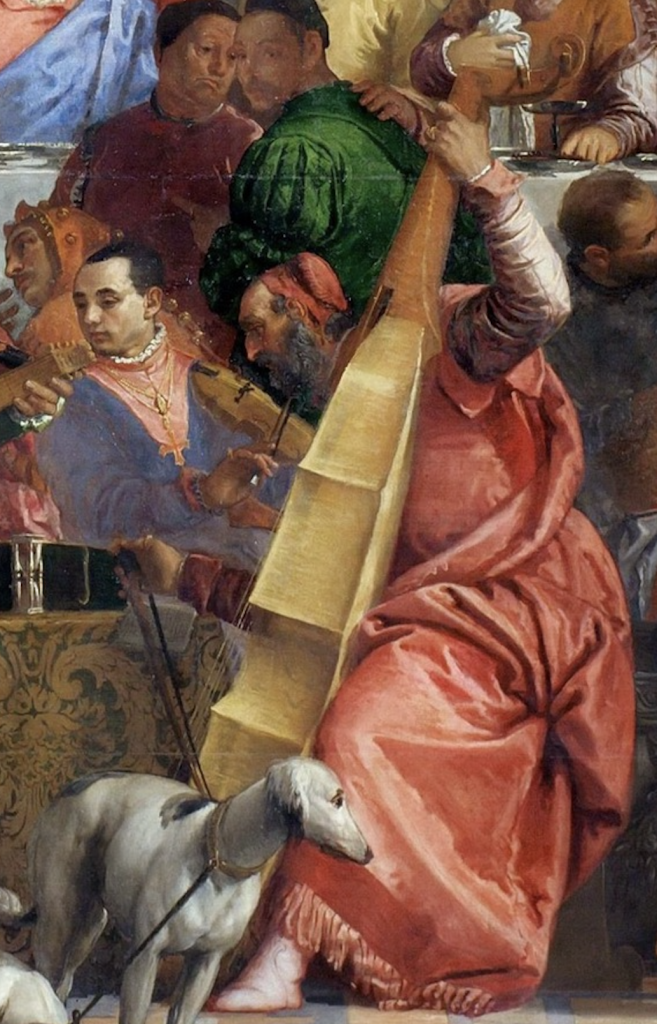
Paolo Veronese
This Renaissance bow for the great bass viola da gamba is very long and very straight, has a moderately high frog and black hair
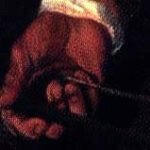
Italy, 16th C.
This bow is being held at the frog, with two fingers on the stick, two at the frog, none on the hair.
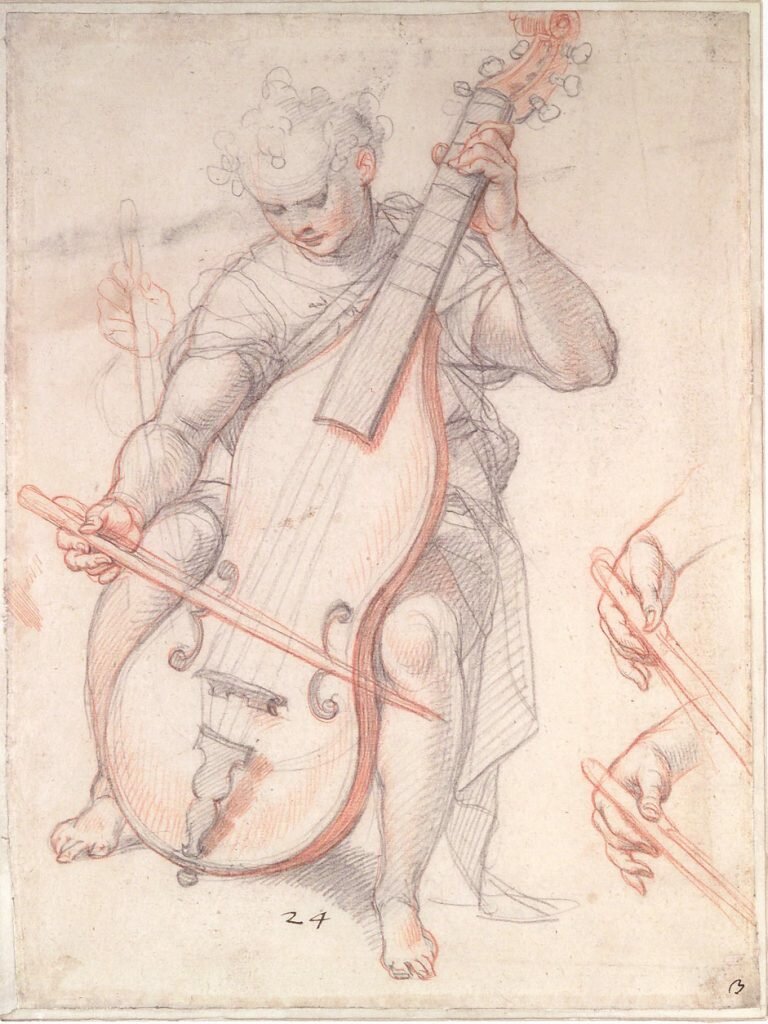
Orazio Sammachini (1532-1577)

After Bonifazio Veronese: Venice, 16th C. (Vazquez-Collection)
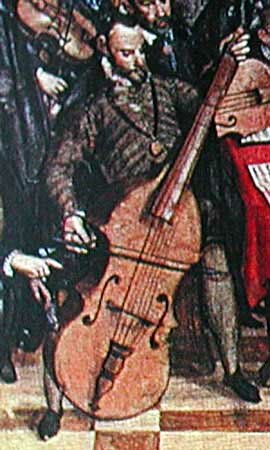
Violone in G: Second half of the 16th C.
Munich Capella under the direction of Orlando di Lasso
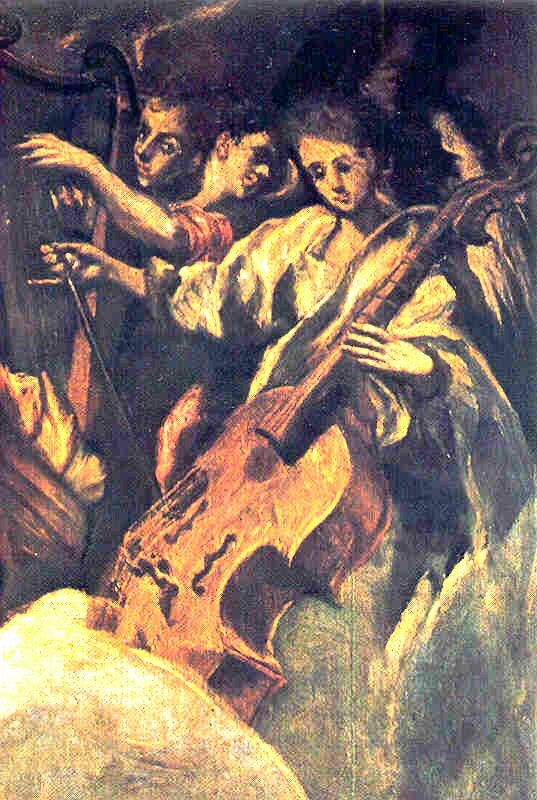
El Greco (1590)
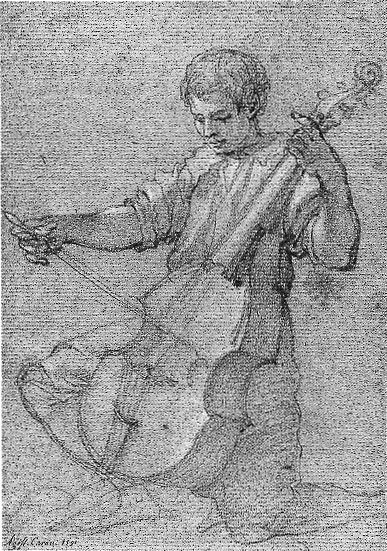
Bartolomeo Cesi (1556-1629)
Baroque Bows

Again we refer to Christopher Simpson, the renowned virtuoso on the viola da gamba. His advice, presented in his treatise on viol-playing, “The Division Violist” (1659 and 1667) as to a bow suitable for a soloist:
“A Viol-Bow for Division, should be stiff, but not heavy. Its length (betwixt the two places where the Hairs are fastened at each end) about seven and twenty Inches. The nut, short. The height of it about a fingers breadth, or a little more.”
Viol bows found in 17th and 18th C. painting do confirm that Simpson was not exaggerating with his 68.6 cm of playing hair! See the examples below.

This fresco (ca. 1700) in the Trinity Church in Salzburg, depicts a viola da gamba by Joachim Tielke
Interestingly, the bow and the bridge are almost identical to those in the Simpson treatise.
See also the Viola da gamba by Tielke, 1697

Vasco Perreira Lucitano: 1604
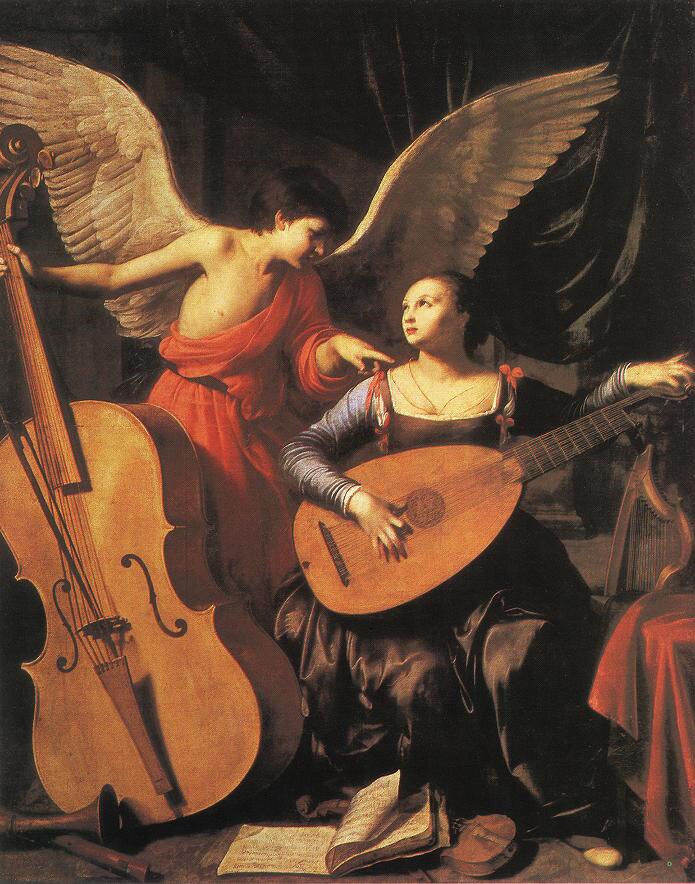
Carlo Saraceni (1579-1620)
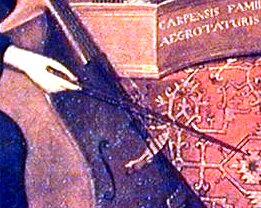
Giovanni Martinelli (ca. 1600-1659): bass viol bow
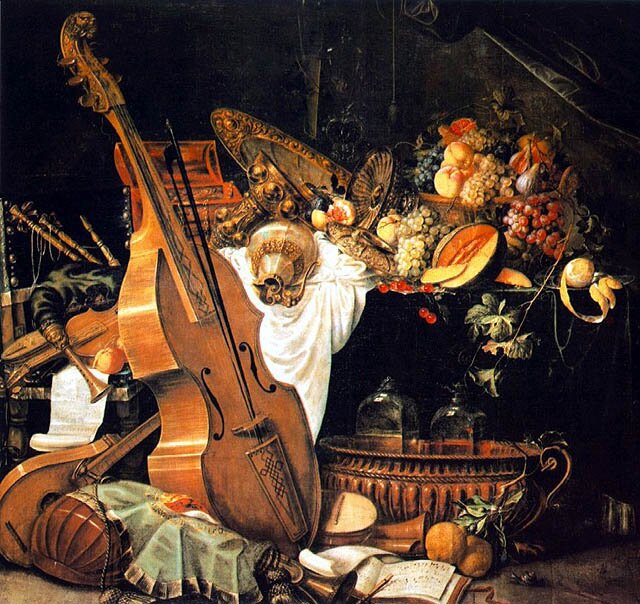
Cornelis van Haarlem (1562-1638)
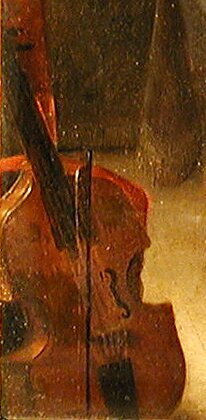
Caspar Netscher or Rogier de la Haye, mid-17th. C. (Vázquez Collection)

Jan Vermeer (1632-75): bass viol bow

Blois: This 18th c. viol bow is very long and straight.
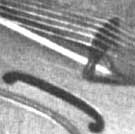
It has a wide ribbon of white hair. Note also the high head, visible just under the bridge
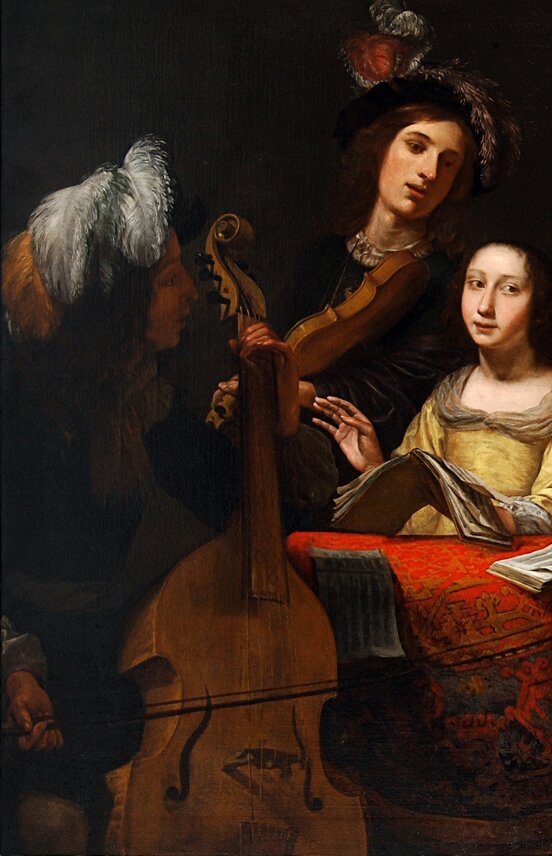
Gerard van Kuijl
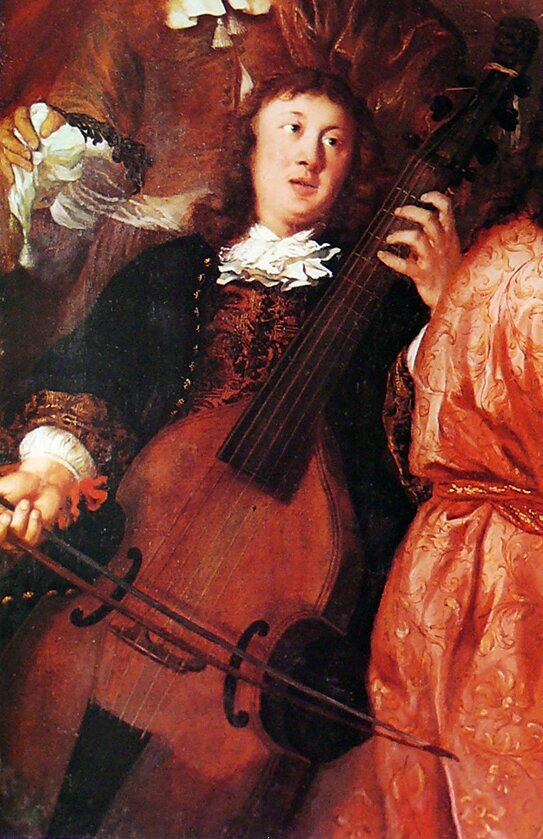
Dietrich Buxtehude performing on a large bass viol.
The bridge is curved outward, the distance between the stick and the hair substantial.
Note: black hair and the very generous spacing of the strings on fingerboard and bridge.
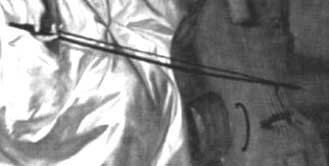
|
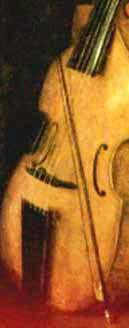 |
| Gabriel Metsu (1629-1667): bow for a bass viola da gamba | Bass viola da gamba, bow at the Court of Louis XIV (1700): very long and straight, low frog, possibly black hair |
Coming to Grips…
18th C. bows for the viola da gamba in the hands of famous soloists:
 |
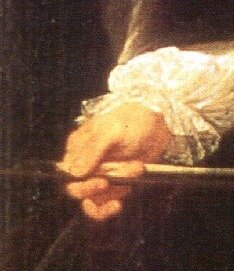 |
| Jean-Baptiste Forqueray | |
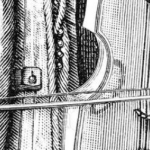 |
 |
| Johann Schenck | |
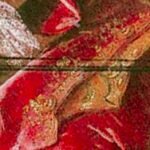 |
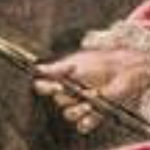 |
| Maximillian Kurfürst von Bayern (1707) | |
 |
 |
| Mme Henriette de France | |
 |
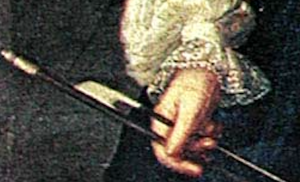 |
| Marin Marais, ca. 1690 | |
 |
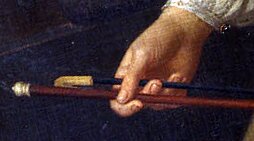 |
| Sir John Langham (1683) | |
 |
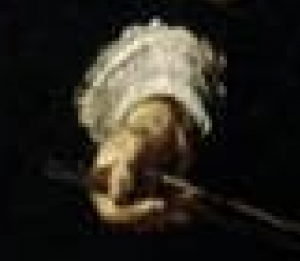 |
| Gonzales Coques, Flemish (†1684) | |
| Carl-Friedrich Abel Note the German bow grip of two fingers on the bow stick, ring finger on the hair, also used by Kühnel. Note the high head, similar to the bow of Mme Henriette |
|
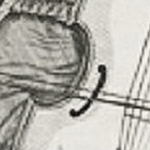 |
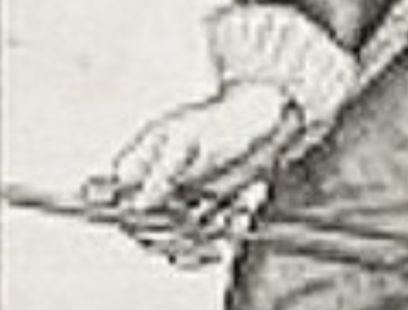 |
| Christopher Simpson (1659) | |
 |
 |
| Painting by Gerard van Kuijl | |
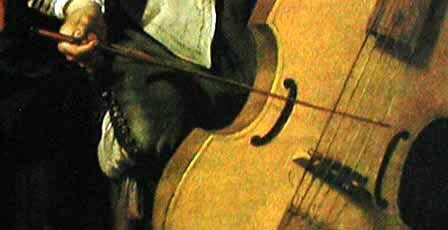
Dutch, 17. C. great bass viol
For comparison:

Bow hold for the Chinese violin (Erhu)
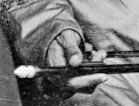
Bow hold: India